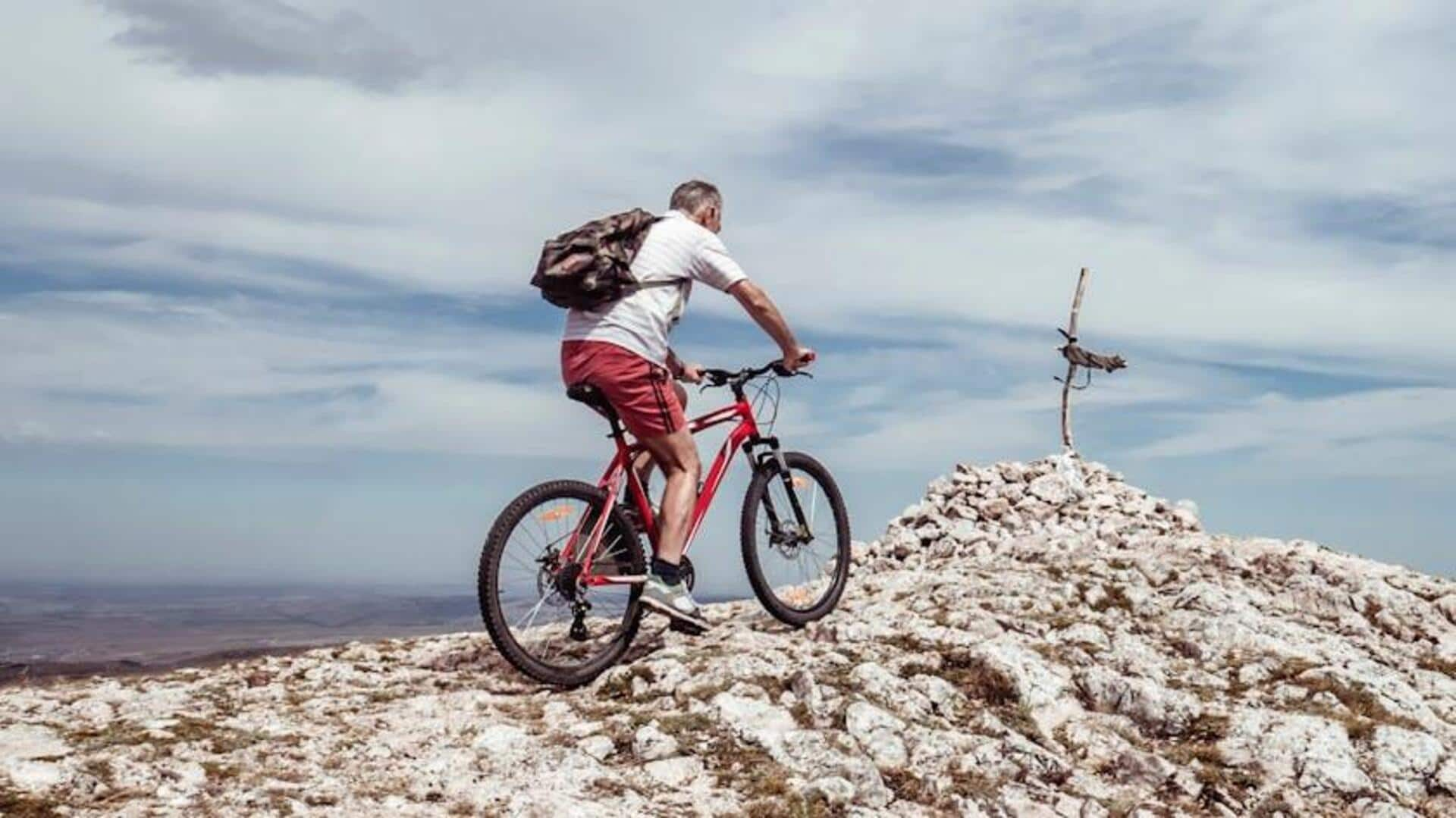
Cycling v/s hiking: Which keeps you fitter?
What's the story
Exploring the outdoors through cycling and hiking comes with a host of health benefits. Both activities serve as excellent cardiovascular workouts, improve mental well-being, and make you physically fit. While cycling is pretty fast and efficient, hiking lets you experience the beauty of nature up close and personal. Here's a look at the specific health benefits each activity offers, so you know how they help.
#1
Cardiovascular health boost
Cycling is a great way to improve cardiovascular health by elevating heart rate and enhancing circulation. Cycling regularly can reduce the risk of heart disease by as much as 50%. However, hiking too is excellent for heart health as it uses large muscle groups for long durations. The uneven terrain of hiking works the body differently from cycling, providing a distinct cardiovascular challenge.
#2
Muscle strengthening benefits
Both cycling and hiking tone muscles but differently. Cycling mostly focuses on lower body muscles like quadriceps, hamstrings, calves, and glutes. It also works core muscles for balance and stability. On the other hand, hiking works on several muscle groups from legs to core, and even the upper body when trekking poles are used. The uneven surfaces during hikes help develop strength in stabilizing muscles.
#3
Mental health advantages
Engaging in outdoor activities, be it cycling or hiking, is good for mental health. Cycling reduces stress levels by releasing endorphins that improve mood and decrease anxiety levels by as much as 20%. Similarly, spending time in nature while hiking has been found to significantly lower symptoms of depression due to increased exposure to sunlight which boosts serotonin production.
Tip 4
Calorie burning potential
Calorie expenditure differs between these two activities according to intensity level, but both serve weight management goals. A moderate-paced, hour-long bike ride can burn about 400-600 calories depending on speed, while an hour-long hike may burn some 300-500 calories depending on terrain difficulty level, making them both viable options for those looking at burning calories efficiently outdoors without equipment constraints or gym memberships required.